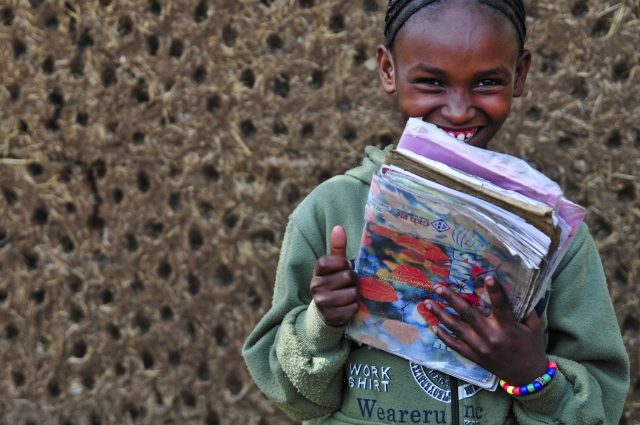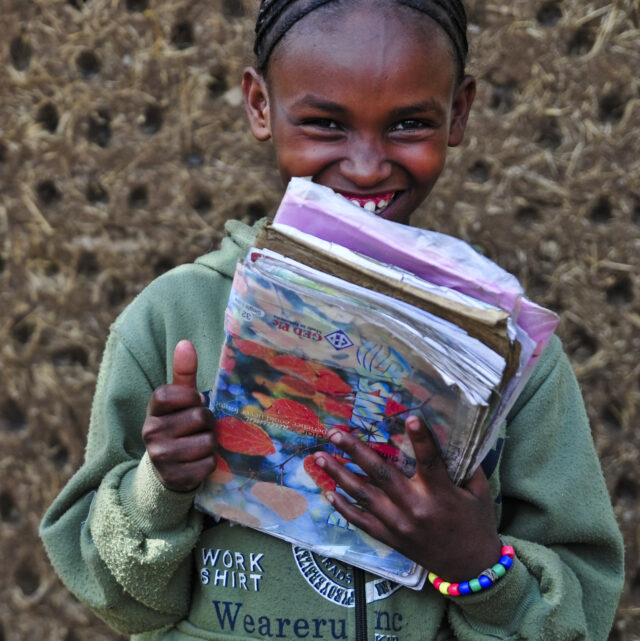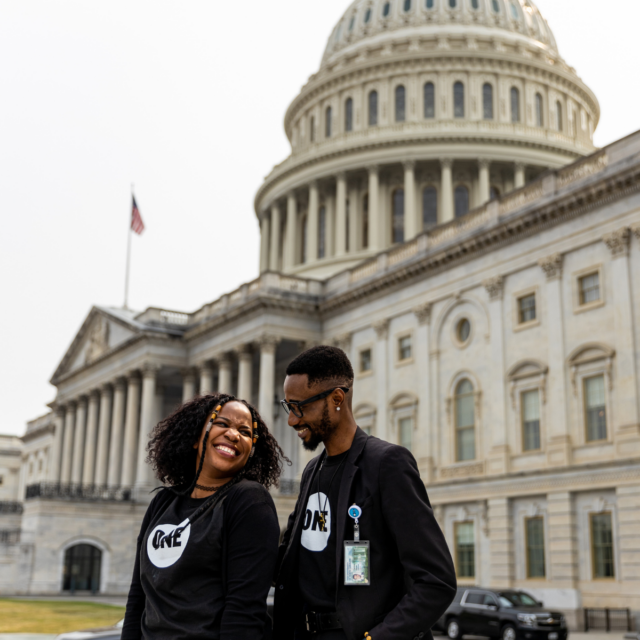Pop quiz: what are the benefits of sending girls to school? You might answer that they will learn how to read, write and do arithmetic, all of which equip them to enter the workforce, earn an income, and contribute more to the economy … And you would be correct. But that’s only part of the answer. Beyond improving their knowledge, skills and earning potential, educating girls can have a big impact on their health, and the health of their children and communities.
That’s because educated girls and women are empowered to live longer, healthier lives. Educated women have more access to health services, more ability to make decisions in their households, and a better understanding of healthy behavior that affects them and their children. Accordingly, between 1970 and 2010, educating girls saved over 130 million adults’ and children’s lives.

Students at Sabatta Primary School in Ethiopia. (Photo credit: Morgana Wingard/ONE)
On the other hand, girls out of school are not only missing out on opportunities to fulfill their learning and earning potential; they are also more likely to become child brides, more vulnerable to diseases like HIV and more likely to die young.
Here are a few ways that getting more girls in school and learning can improve their health, as well as the health of those around them:
- If every girl completed a primary education in sub-Saharan Africa, maternal mortality could fall by a dramatic 70% – in part because women with more education tend to have fewer children. This may be because more educated women have more job opportunities, and as their incomes and standard of living rise, have the opportunity to access better care.
- In sub-Saharan Africa, if child mortality rates were to fall to the level for children born to women with secondary education, the lives of 1.2 million children under five could be saved each year. More educated women tend to have better knowledge about things like immunization, nutrition, and prenatal care, all of which are critical to addressing the causes of death of children under 5 like pneumonia and diarrhea.
- Women with more education are more likely to have greater knowledge about HIV and HIV prevention, giving them the tools to protect themselves from infection. In Nigeria, for instance, one study found that 65% of women with a secondary education knew it was possible to reduce the risk of acquiring HIV through key prevention methods, compared with 38% of women with no education. This is especially important for adolescent girls and young women in the countries hardest hit by the epidemic who are more vulnerable to HIV than boys the same age. Sub-Saharan Africa is a case in point: For every young man newly infected with HIV in the region, two young women are infected. For every adolescent boy infected, three girls are infected.
When girls are in classrooms and learning, they benefit in ways outside the classroom and beyond the workforce. Educating girls empowers them to lead longer, healthier lives, which in turn has life-saving impacts on their families and communities. So if you care about health like I do, it’s smart to care about education too.

A student at Sabatta Primary School in Ethiopia. (Photo credit: Morgana Wingard/ONE)
That’s why ONE is saying that educating every girl is good for everyone. What can you do? Sign our petition to help get 130 million out of school girls into school and learning.



